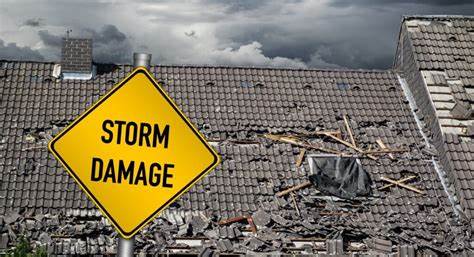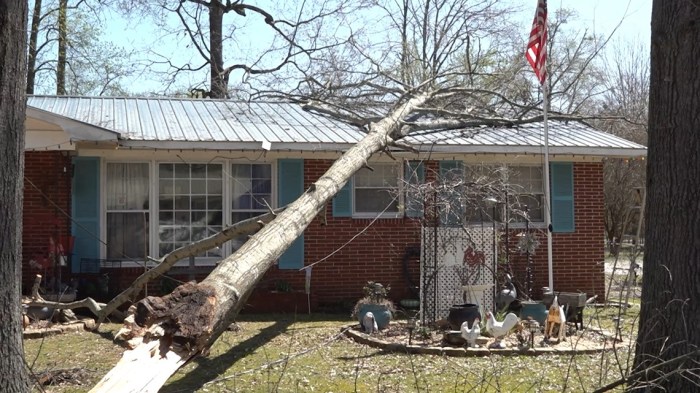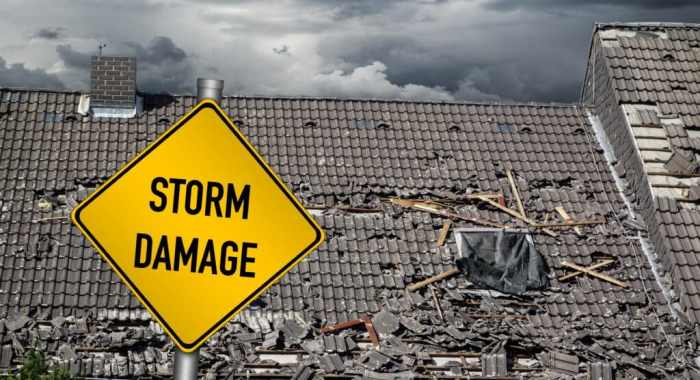How Roofing Companies Respond to Severe Weather sets the stage for this enthralling narrative, offering readers a glimpse into a story that is rich in detail and brimming with originality. From the challenges faced to the safety measures implemented, this guide delves into the intricate world of roofing companies and their response to severe weather conditions.

 Roofing companies face a multitude of challenges when severe weather strikes, impacting their ability to operate efficiently and safely. These challenges can significantly disrupt their workflow and pose risks to both workers and the quality of the work performed.
. Additionally, companies provide tools such as safety ropes, anchors, and ladder stabilizers to secure the work area and minimize risks.
Roofing companies face a multitude of challenges when severe weather strikes, impacting their ability to operate efficiently and safely. These challenges can significantly disrupt their workflow and pose risks to both workers and the quality of the work performed.
. Additionally, companies provide tools such as safety ropes, anchors, and ladder stabilizers to secure the work area and minimize risks.
 Creating an emergency response plan for severe weather incidents is crucial for roofing companies to ensure the safety of their employees and clients, as well as to minimize damage to properties. These plans typically involve a series of steps to be followed in case of severe weather events.
Creating an emergency response plan for severe weather incidents is crucial for roofing companies to ensure the safety of their employees and clients, as well as to minimize damage to properties. These plans typically involve a series of steps to be followed in case of severe weather events.

Challenges Faced by Roofing Companies During Severe Weather
 Roofing companies face a multitude of challenges when severe weather strikes, impacting their ability to operate efficiently and safely. These challenges can significantly disrupt their workflow and pose risks to both workers and the quality of the work performed.
Roofing companies face a multitude of challenges when severe weather strikes, impacting their ability to operate efficiently and safely. These challenges can significantly disrupt their workflow and pose risks to both workers and the quality of the work performed.
Impact on Operations
Severe weather events such as hurricanes, tornadoes, or heavy storms can cause delays in roofing projects due to safety concerns and unfavorable working conditions. High winds, rain, or snow can make it dangerous for workers to be on the roof, leading to project postponements and extended timelines. Moreover, the need to ensure the safety of workers during severe weather can result in temporary shutdowns, further affecting the company's productivity.Risks of Working on Roofs
Working on roofs during severe weather conditions introduces various risks for roofing companies. Slippery surfaces from rain or snow increase the chances of accidents and injuries for workers. Additionally, strong winds can destabilize materials and equipment, posing a threat to both workers and the structural integrity of the roof. The presence of lightning during thunderstorms further heightens the risk of electrical hazards, making it unsafe for workers to be on the roof.Safety Measures Implemented by Roofing Companies
Roofing companies prioritize safety measures to ensure the well-being of their employees during severe weather conditions. These measures include following strict protocols, providing necessary equipment, and offering comprehensive training programs.Safety Protocols and Procedures
Roofing companies have established safety protocols and procedures to be followed in response to severe weather. This includes monitoring weather forecasts, assessing the risks involved, and determining when it is safe to work on a roof. In case of extreme weather conditions, such as storms or high winds, roofing professionals are trained to prioritize their safety and postpone work if necessary.Equipment and Gear
Roofing professionals use specialized equipment and gear to ensure their safety while working in adverse weather conditions. This includes harnesses, safety glasses, helmets, and non-slip footwear to prevent accidents and injuriesSafety Training Programs
Roofing companies invest in safety training programs to educate their employees on best practices and procedures to follow during severe weather. These programs cover topics such as hazard recognition, fall protection, emergency response, and the proper use of safety equipment. By regularly conducting safety drills and providing hands-on training, roofing companies ensure that their workers are well-prepared to handle any challenges that may arise.Emergency Response Plans for Roofing Companies
 Creating an emergency response plan for severe weather incidents is crucial for roofing companies to ensure the safety of their employees and clients, as well as to minimize damage to properties. These plans typically involve a series of steps to be followed in case of severe weather events.
Creating an emergency response plan for severe weather incidents is crucial for roofing companies to ensure the safety of their employees and clients, as well as to minimize damage to properties. These plans typically involve a series of steps to be followed in case of severe weather events.
Steps in Creating an Emergency Response Plan
- Assessing potential risks and vulnerabilities specific to the region where the company operates.
- Establishing clear communication channels and protocols for disseminating information during emergencies.
- Training employees on emergency procedures, including evacuation routes and safety measures.
- Developing contingency plans for various scenarios, such as extreme winds, hail, or heavy rainfall.
Coordination with Local Authorities and Emergency Services
Roofing companies often coordinate closely with local authorities and emergency services to ensure a swift and effective response to severe weather events. This collaboration may involve sharing information on weather forecasts, road conditions, and evacuation orders to prioritize safety measures.Examples of Successful Emergency Response Strategies
One example of a successful emergency response strategy is when a roofing company preemptively secured loose materials on roofs before a predicted storm, preventing potential damage and injuries.
Another successful strategy involved having a designated emergency response team trained to assess damage quickly and initiate repairs to minimize further risks.













